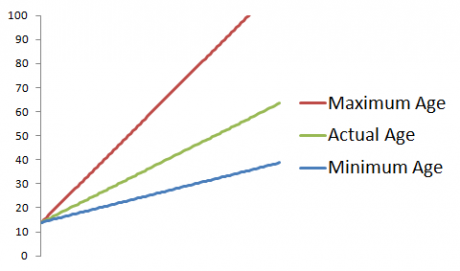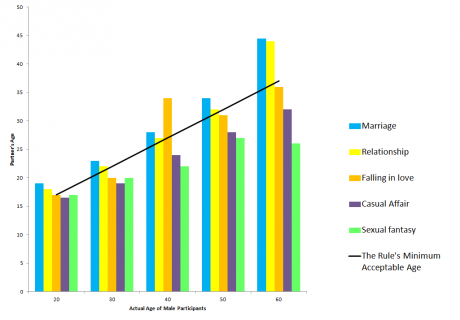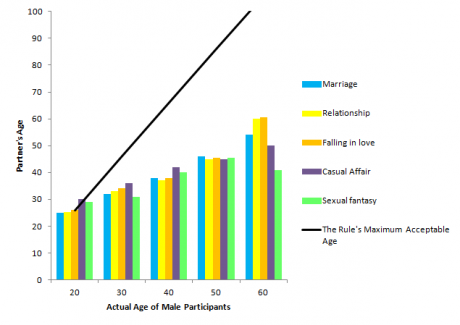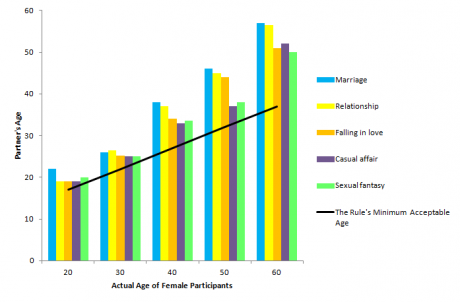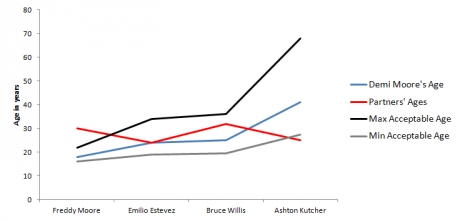for CANCER and other DISEASES
by Walter Last
Love may be the missing factor in the treatment of many diseases. With cancer, for instance, psychological therapy has been shown to have a far greater success rate than any other properly evaluated therapy. Fear has a major negative impact on cancer patients. There is also a close relationship between fears often present subconsciously and breathing problems as well as heart disease. Love is the opposite of fear.
Emotional and psychological factors may well be the main reason why various therapies work with some patients but not with others. Releasing past emotional hurts and resentments is definitely good and helpful with any kind of healing, but it may not be enough if positive feelings remain missing. Therefore, the ideal is a holistic combination of appropriate therapies on other levels with additional comprehensive emotional therapy.
After many years of working and experimenting with a wide range of therapies, I have come to the conclusion that some of the most important factors in restoring health and wellbeing are the twins of love and joy. For our emotional body, regular doses of these as well as other positive feelings, are as essential as vitamins are for the physical body, otherwise we develop emotional deficiency symptoms which can eventually disable physical functions. Most of us can remember a time when we were madly in love. Love, then, was not just a mental concept, but also an actual bodily sensation and it made us feel invincible. I believe that we really can become invincible in regard to disease by learning to feel this way again and this time on a regular basis as a way of life.
Learning to Love Again
Obviously it is not possible to fall in love with someone on a regular basis, but it is possible learning to experience the feeling of love as a conscious exercise. Love has traditionally been associated with the heart. Of course, it is not really the heart muscle itself that makes us feel love but rather an energy vortex or chakra in our aura that is centred at the middle of the breastbone. In order to feel love and increase our capacity to love we need to stimulate this heart centre by focusing our attention on it. Because of the specific location of the heart centre, diseases in the chest area should respond most readily to this therapy. This applies especially to breast cancer, which has a strong emotional and relationship component.
For most of us, learning to feel love as a way of life does not come easy and requires a commitment to an exercise program. It will be especially difficult for most males, while many women may take to it quite naturally. In the following you will find some useful exercises. Experiment and continue to practise those that you find best to generate a feeling sensation in your body.
Feeling is an energy, and energy follows thought or consciousness. This means the most basic requirement for activating our heart centre is to keep our attention focused on it. Later, when it is easy for us to feel, we can just keep a small part of our attention there while going about our daily business. You may find that it is very difficult to feel anything when you are tired or otherwise low in energy.
Therefore, select a period of the day for these feeling exercises when you are reasonably energetic or possibly energise yourself beforehand with some light physical exercises combined with vigorous breathing in fresh air. Shaking all limbs and the whole body, as well as aerobic dancing to lively music are especially suitable to energise oneself. Another possibility is a slow walk in fresh air with eyes to the ground, as monks may have done in a monastery garden.
Breathing into the Heart
Becoming conscious of our breath is one of the easiest ways to generate a feeling sensation inside our body and to keep our attention focused. Sit, lie or walk quietly and mentally follow your breath as it gently moves in and out. Breathe through the nose. Become aware that the outflowing breath is somewhat warmer than the incoming breath. After a while begin to pause for a second or two between inhalation and exhalation. Feel a light pressure in the middle of your chest during this pause. When you can distinctly feel it, focus again on feeling the warmth of the outgoing breath.
Now combine this warmth with the light pressure felt in the middle of the chest. This is the location of the heart centre. Keep your attention focused on it and gradually try to intensify the feeling of warmth and spread it all over the chest, but especially towards the location of any health problem, such as a breast tumour. When you feel the warmth, you can disregard the pressure. This warmth inside your chest is very pleasant and makes you feel cosy, cared for and protected. Intensify any of these feelings if and when you get them. Try to create them deliberately by using your imagination and recalling other situations when you felt this way, possibly when relaxing in a warm bath while listening to soft music. You may find that you can perceive feeling sensations more easily and with greater intensity if you exhale very slowly and gently.
When you can do this exercise successfully, you can also use it to keep your attention on the heart centre during your daily activities. You may quickly learn to keep part of your attention focused inside you chest while performing routine tasks, although you are likely to forget it during more demanding mental activities. That does not matter. If you ask your subconscious mind to remind you to do the exercise whenever conveniently possible, it will eventually oblige and may tell you a hundred times a day to focus again. If you are somewhat tired it may even be easier to generate a feeling sensation during activities rather than by lying down and closing your eyes, which may cause you to drift off to sleep.
If it helps you to focus, you may also imagine your incoming breath being rose coloured or bright green and you may see this colour intensify in the chest area with each successive breath. Another possibility is to put one hand on the chest to feel a light pressure or to press lightly with one or several fingers at the middle of the breastbone. You may also experiment with a different breath imagination. Imagine your breath moving through the middle of the breastbone. Again, feel the slight pressure and then the developing warmth. For some, this exercise produces stronger sensations. When you are somewhat tired it will be better to do these exercises with your eyes open and possibly even while slowly moving or walking.
Feeling Love
After successfully practising the breathing exercise for some time, start experimenting with the following suggestions to see which one suits you best. Eventually you may use all of them at one time or another depending on arising opportunities.
It will be easier to feel a love sensation if one already is in a loving relationship, or as a mother with a baby or as an animal lover with some puppies to care for. In this case you may just look lovingly at the chosen object while doing the breathing exercise and you may find it quite easy to convert the warmth in your chest into a feeling sensation of love. If you are not so lucky, you may recall in your memory a time or incident when you actually felt love. Vividly imagine this time and then intensify a sensation of love when it arises. Then forget the actual incident and only hold fast to that feeling inside your chest.
A further possibility is to look lovingly at something grand or beautiful. This may be a tree, a flower, a picture, clouds, the sky or a person. Soak in the beauty and really appreciate it. Then send that feeling of appreciation back to the adored object. All the time keep focusing your attention on the breath in the chest centre and intensify any arising positive feeling. You may do the same by listening to some soul-stirring music. Eventually you can start feeling and sending a silent appreciation of love to anyone you come in contact with and over a distance also to someone with whom you have a disagreement or a past problem. When you tend to plants, watering, transplanting or sowing, project onto them your feeling of love or appreciation. You can really do that anytime at any activity. Your main problem will be to remind yourself again and again to do it.
If you have difficulty generating a feeling sensation of love then try to feel compassion. This is also centred in the heart area. Look at or imagine pictures of suffering individuals. When you can feel and radiate compassion, try to change this to a feeling of love or a combination of love and compassion.
A highly recommended exercise is as follows. Whenever you meet someone or think of someone smile and silently say: "God bless you" while feeling a wave of love or compassion radiating from your heart centre. Another exercise is to think of someone and extend your arms with palms forward in the so-called Madonna gesture. Again, smile and feel the love or compassion in your heart. During the day try to remember this feeling of love in your heart and centre on it.
Feeling Joy
Joy is the twin of love in helping us to live a healthy and fulfilled life. As with love, it is not easy to feel joyful as a real body sensation, especially if we do not have anything special to be joyful about. As with love and compassion, joy may be felt in the heart centre as a sensation of exuberance. However, a quieter form of joy close to bliss can be felt at the forehead centre. This is related to the pituitary gland behind the middle of the forehead. Concentrating on it during deep meditation can generate a feeling of bliss. It can also be felt as a quiet kind of blissful joy when focusing on the pituitary gland or forehead centre during a breathing exercise. For working with this and the other centres mentioned in the following see
The Chakra System in the article on Bio-energies.
As the breath does not flow into the brain, you imagine that the inhaled air is combined with a life-force energy, also called prana or chi, which you can separate from the air molecules and lead to any place in your body where you want to concentrate it. You do this with your will; just imagine it being so, the prana flowing upwards from the nose into the pituitary gland behind the forehead. If you can visualise colours, you may see the forehead centre being filled with an indigo-coloured prana.
As with the breathing into the heart, first try to feel a light pressure partly due to the focus of your attention and partly to the accumulating prana. Again try to feel warmth or tingling during the slow and gentle exhalation. To focus on the correct point it helps greatly if you close your eyes and turn them inward and upward as if looking into the brain at a 45-degree angle. When you can easily do this, you may even be able to just imagine looking upwards and inwards and feel a light pressure in the pituitary area while you have your eyes open and are engaged in other activities.
When you are able to feel the pressure or warmth, start smiling inwardly and direct this smile to the pituitary gland. As you keep smiling, you may gradually feel a sensation of joy and happiness spreading from your head into your body. If you have already learned to feel a love sensation in your heart centre, combine this love feeling with the joy spreading from your head into a unified feeling of elation. The natural awakening of the forehead centre is stimulated by using the 'mind's eye' as in creative visualisation and imaginative and intuitive thinking.
Feeling Connected and Peaceful
We can learn to overcome the stresses of daily life and live instead in a condition of profound inner peace by frequently focusing our attention at the top of our head. This will be invaluable with all stress-related diseases and conditions and also helps to energise the body in a pleasant way.
Relax, close your eyes and imagine a stream of white light entering the top of your head. Try to feel as well as see it. However, feeling it is more important than only seeing it. Again, it may help at first to focus on feeling a light pressure and warmth at the top of the head, possibly aided by leading the breath prana to this point. As with previous feeling exercises exhale very slowly and gently. Imagine feeling more and more peaceful, a deep peace beginning to fill and surround your body and mind. In addition, watch for a feeling of being connected to All That Is, to the Universe, to God, however you want to call it. If you can feel or imagine feeling something like this, try to intensify the feeling.
When you are able to feel the peace or connectedness during the exercise, you may start focusing part of your attention on the top of your head and feel at peace during your daily activities. Try also to keep part of your attention on the top of your head while you try to feel the joy behind the forehead and the love at the heart centre. Alternatively, focus in sequence on the top of the head, the forehead and the heart. Eventually, you may even try to focus on all three simultaneously and feel peaceful, quietly joyful and loving at the same time.
For another recommended exercise have a look at the picture of the '
Magic Presence' in the Spirituality file. You may regard this as your Personal God Presence, also called I Am Presence, Oversoul or Monad. By frequently focusing on this Presence, your connection to it gradually becomes stronger which then leads to rapid spiritual development. You cultivate this connection by generating a feeling of love or joy in your heart and then sending it through the top of your head to your imaginary God presence. Immediately you feel an even stronger energy of love, peace and protection entering your crown centre from above and beginning to fill your head and your body.
Do this as often as you can.
The Throat Centre
The throat chakra is the centre for our creative expression. It also regulates the functions of the thyroid and parathyroid glands. As with the other centres, you can activate or balance it with breathing exercises that let you feel warmth and other expressions of energy in the throat. However, The proper development of this centre, as with all the other centres, depends on properly using it in daily life. This involves mainly creative use of sounds such as speaking the truth and giving kind or helpful advice. The opposite activities, such as gossipping, uninvited criticism and also not speaking out due to resentment, greatly harm this centre.
Singing is very beneficial for this centre, also the chanting of mantras and especially the OM or AUM sound. Such chanting or intonation is best done in a way that you can feel the sound vibrations in parts of your head such as the lips, cheeks or ears or between your upper and lower teeth.
The Solar Plexus
The abdominal area is a storage and dumping ground for resentments and other unreleased and unprocessed emotions. Negative feelings, such as anger or fear commonly arise from here as a reaction to past events. This may make us feel insecure and vulnerable, a feeling that the outside world is hostile or dangerous and we have to fight for what we want or to protect ourselves. Together with stress and other factors, this can lead to diseases of the digestive system and also makes healing of such diseases more difficult. This is especially a problem with cancer of these organs.
The solar plexus is a nerve centre behind the stomach and the seat of another important feeling centre. Focusing on the solar plexus centre helps to make us feel more radiant and powerful and, with this, safe and protected, we also 'have the guts' to do what we need to do. To activate this centre breathe into it until you feel at first the pressure and then the warmth spreading all through your abdomen. Intensify the sensation of pleasant, relaxing warmth that makes you feel safe and protected.
Accumulating Breath Energy
To breathe into the abdomen or any other area where you cannot feel the breath directly, imagine that the inhaled breath consists of two parts, the physical air molecules as well as a breath energy or prana. During inhalation the lungs automatically separate the breath energy from the air molecules. You only exhale the 'empty' air while the prana flows to where you lead it with your conscious attention.
To energise the abdomen, you imagine and try to feel the energy moving directly into the abdomen during inhalation. During exhalation you imagine that you press the energy down so that it becomes compressed at the bottom of the abdomen or any other organ that you want to energise. With each successive breath more compressed energy accumulates until the target area feels sufficiently energised. You may feel this as warmth, tingling, pressure or any other sensation.
If you can visualise colours, you may try to see the energy in a colour selected according to the rules of colour therapy. To feel more energetic, for instance, you may imagine a golden yellow and for pain relief or sedation blue. Alternatively, you may visualise the colour that is typically associated with the main energy vortex of area in question. For the top of the head this is violet or purple, for the forehead indigo, the throat centre blue, the heart green, the solar plexus golden yellow, the sacral centre orange and the base of the spine red.
Sexual Energy
The sacral energy centre is located between the navel and the pubic bone. It is weak or distorted with all diseases of the lower abdomen or of the pelvic organs, mainly involved with reproductive functions and elimination. You will be able to heal diseases of these organs much better when activating and balancing this centre by sending it energy and love. As for the solar plexus, you may do this by directly breathing into the lower abdomen.
The typical feeling sensation of the sexual energy may be described as melting orgasmic streamings in the lower abdomen. After you have activated the sacral centre with the accumulating breath energy, you may be able to generate these orgasmic streamings by gently and rhythmically squeezing your buttocks or better, contracting the perineum. Try also to walk slowly with a relaxed, contemplative mind. With all of these methods, focus your attention on any arising sensations in the sacral area and intensify whatever you feel. Lead any sensations in the sexual organs into the lower abdomen. The energy colour related to this area is orange.
If you have a sexual partner you may be able to generate these feelings by being sexually connected for a long time but with only minimal activity, mainly of a caressing nature. It is fine to remain connected with a soft penis. If the orgasmic feelings become stronger, try to lead them upwards, spreading through the upper abdomen into the heart area where you may feel them as love, which you may then beam back onto your partner. For further information on sexual problems and sexual therapy see
Sexuality as well as
Spiritual Sex.
The Base Centre
The centre at the base of the spine reflects our will to live, to be incarnated in the present body. It also relates us to the earth energies, makes us feel grounded. Work on this centre is required if we are losing the will to live. In addition to improving the mental, emotional or biological conditions that led to this situation, we can bring this centre back to health with activities that bring us in closer contact with the earth energies. Gardening is well suited for this, walking barefoot, lying naked on the moist grass or dancing barefoot on the grass or the beach, witnessing and admiring great natural events, such as thunderstorms, waterfalls or sunsets.
Spiritual growth
In addition to healing a specific problem, activating and balancing our chakra system is highly beneficial as part of our spiritual growth. If we do not have a major problem in an area related to a particular chakra, then we can assume that the lower chakras will work normally and do not need much attention. If we have a strong will to live and normal sexual and digestive functions, then the three related chakras will also be adequate. The same applies to the throat chakra. If we usually speak our mind in a reasonably kind and helpful way, then this centre will be fairly developed as well.
Therefore, most of our attention should go to the three remaining higher centres, the heart, forehead and crown chakra. Of these it is advisable to start working first on the heart chakra. Once we can feel the love in our heart and frequently activate this feeling and radiate it out or to other parts of our body, we have made the most important step in healing ourselves and are well advanced on the spiritual path.
Conclusion
If you have a disease or health problem in a specific organ or area of the body, you can now supply it with all the energy and emotional support that it needs for healing, in addition to the nutritional and other support that you may provide. On a regular basis fill yourself with love and then mentally send it with an inner smile to the organ in need of healing. In addition breathe more energy into it or lead it there from the storage area behind the navel. Feel it getting warm or tingling or just feeling good. At the same time see it filled with a brilliant white healing light. Intensify the vision and the feeling and hold it for a long time. Know that you are being healed.
In addition to feeling joy, love and all the other good feelings again and energise yourself with healing life-force, at some stage on your road to health and wellness it will become necessary to clean out and release old negative feelings. These may still linger as resentments, fear or guilt in your memory or cause muscle contractions and energy blockages as well as crystallisations in body tissues related to specific feeling memories.
If you do not want to pay a professional to help and guide you with this, it will be best to join or form a small healing group where you can learn and practise various emotional release techniques. Becoming loving and positive again before jumping into a pool of freshly released negativity helps to protect you from wallowing for a long time in misery. It also makes the important task of forgiving yourself and everyone else for perceived past trespasses so much easier and more effective.
